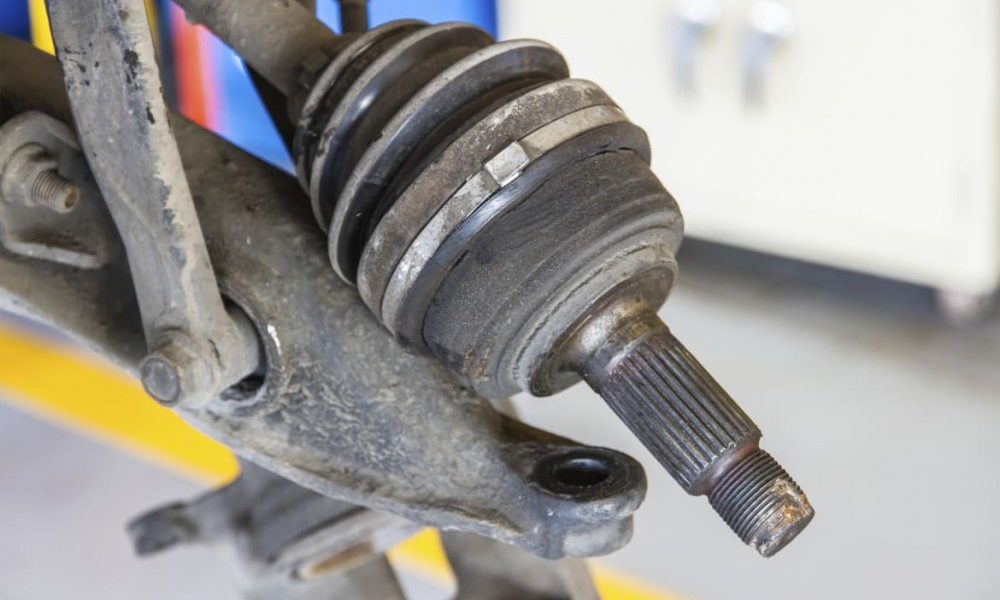Front-drive vehicles, many all-wheel-drive vehicles and some rear-drive vehicles have constant-velocity joints that connect the transmission to the drive axles and wheels. A front-drive vehicle will have four CV joints, each covered by a boot.
CV joints are covered by rubber or plastic boots that keep the joints lubricated and prevent dirt and water from getting in. If a boot tears, grease can leak out and moisture and dirt can get in. If left unattended, it's only a matter of time before the joint fails from lack of lubrication or corrosion. When that happens, the whole axle may need to be replaced.
Drive axle boots often last the life of a vehicle and are not listed among items that need periodic replacement. They should, however, be inspected at least once a year, or more often on high-mileage vehicles or ones that see what manufacturers describe as "severe" service, such as off-road use or driving-industry conditions.
If a small tear is caught early, it may require only the relatively minor repair of replacing the boot and adding fresh grease instead of more major surgery. Many repair shops, though, will recommend replacing the entire axle if a boot is torn because there may be unseen damage to the CV joints and axle shafts that could result in other problems.
Outer boots (the ones closest to a wheel) are more prone to tears than inner boots. One indication of a torn boot is grease spots under the front axle or grease splattered on or around the inward-facing side of a wheel. Among the indications that a CV joint or drive axle has been damaged is a clicking or popping noise when turning, or vibrations at highway speeds.



Leave a Reply